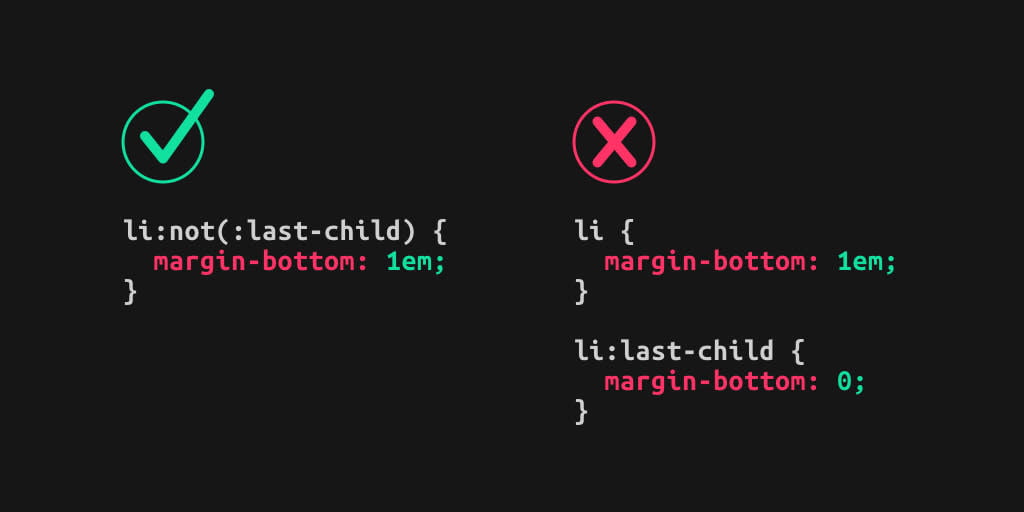
An enabling selector is what I call a selector that does a job without disabling the particular rule. I’ll explain using the following example.
Let’s say we have list items and we want to add the margin to the last one.
<ul>
<li>Item 1</li>
<li>Item 2</li>
<li>Item 3</li>
<li>Item 4</li>
<li>Item 5</li>
<ul>Here’s the usual, disabling way.
li {
margin-bottom: 1em;
}li:last-child {
margin-bottom: 0;
}
First, we add margin-bottom to all elements. Then, we disable the bottom margin on the last element. I call this technique disabling selector since the li:last-child selector disables the previous selector’s rule.
But we could do better using enabling selectors.
li:not(:last-child) {
margin-bottom: 1em;
}The selector li:not(:last-child) is enabling margin-bottom on all elements except the last one. There’s no need to disable anything. That is much readable and maintainable if you ask me.
Here’s another version of the enabling selector for the same example.
li + li {
margin-top: 1em;
}In this version, we add margin-top to all elements that have a previous sibling, which means to all elements except the first one, which doesn’t have a previous sibling.
There you have it, enabling selectors that do a better job in less code. Here’s the demo:





